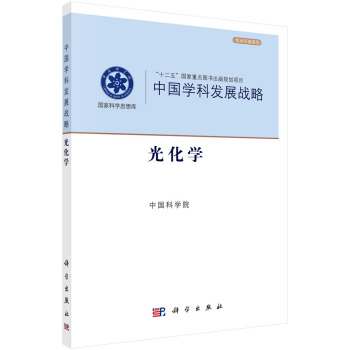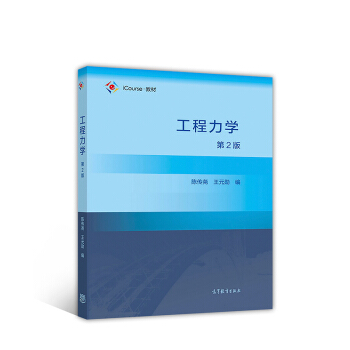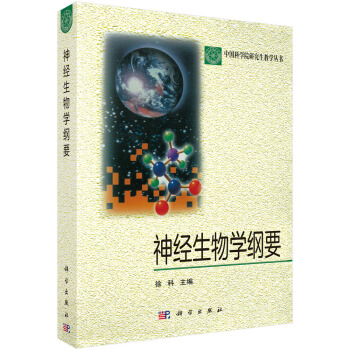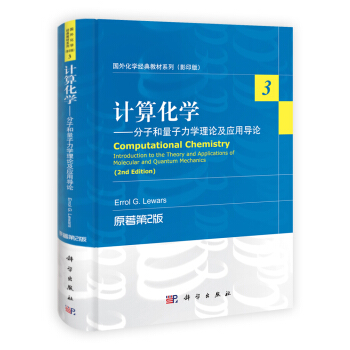

具体描述
内容简介
2003年第1版以来直到2009年底的重要进展,都已纳入本书新版中。重要的概念(例如,分子力学、从头计算、半经验及密度泛函理论)都辅以其扼要的历史背景和**科学家的人物介绍。计算化学基础理论构架的阐述都配以清晰的计算实例。增加了第1版未涉及的内容,例如,溶剂化效应,如何做CASSCF计算,过渡元素等。每章章末附有习题,用于测试读者的理解程度。至于较难的习题,其中有些没有直接明确解的,可到书末寻找答案。附有大量参考文献,可以帮助读者核查所有关键论点的基础,启发深入思考。使得本书不仅是教科书,还是一部极具参考价值的科学著作。本书特别适合计算化学和理论化学专业的高年级本科生和研究生、科研院所和企业从事计算化学相关领域的专业人员,同时也可用于自学和指导用书。目录
1 An Outline of What Computational Chemistry Is All About1.1 What You Can Do with Computational Chemistry,
1.2 The Tools of Computational Chemistry
1.3 Putting It All Together
1.4 The Plulosophy of Computational Chemistry
1.5 Summary
References
Easier Questions
Harder Questions
2 The Concept of the Potential Energy Surface
2.1 Perspective
2.2 Stationary Points
2.3 The Born-Oppenheimer Approximation
2.4 Geometry Optimization
2.5 Stationary Points and Normal-Mode Vibrations-Zero Point Energy
2.6 Symmetry
2.7 Summary
References
Easier Questions
Harder Questions
3 Molecular Mecbanics
3.1 Perspective
3.2 The Basic Principles of Molecular Mechanics
3.2.1 Developing a Forcefield
3.2.2 Parameterizing a Forcefield
3.2.3 A Calculation Using Our Forcefield
3.3 Examples of the Use of Molecular Mechanics
3.3.1 To Obtain Reasonable Input Geometries for Lengthier(Ab Initio, Semiempirical or Density Functional) Kinds of
Calculations
3.3.2 To Obtain Good Geometries (and Perhaps Energies)for Small- to Medium-Sized Molecules
3.3.3 To Calculate the Geometries and Energies of Very Large Molecules, Usually Polymeric Biomolecules (Proteins
and Nucleic Acids)
3.3.4 To Generate the Potential Energy Function Under Which Molecules Move, for Molecular Dynamics or Monte Carlo
alculations
3.3.5 As a (Usually Quick) Gu ide to the Feasibility of, or Likely Outcome of, Reactions in Organic Synthesis
3.4 Geometries Calculated by MM
3.5 Frequencies and Vibrational Spectra Calculated by MM
3.6 Strengths and Weaknesses of Molecular Mechanics
3.6.1 Strengths
3.6.2 Weaknesses
3.7 Summary
References
Easier Questions
Harder Questions
4 Introduction to Quantum Mechanics in Computational Chemistry
4.1 Perspective
4.2 The Development of Quantum Mechanics The Schrodinger Equation ,
4.2.1 The Origins of Quantum Theory: Blackbody Radiation and the Photoelectric Effect
4.2.2 Radioactivity
4.2.3 Relativity
4.2.4 The Nuclear Atom
4.2.5 The Bohr Atom N
4.2.6 The Wave Mechanical Atom and the Schrodinger Equation
4.3 The Application of the Schrodinger Equation to Chemistry by Huckel
4.3.1 Introduction
4.3.2 Hybridization
4.3.3 Matrices and Determinants
4.3.4 The Simple Huckel Method-Theory
4.3.5 The Simple Huckel Method-Applications
4.3.6 Strengths and Weaknesses of the Simple Huckel Method
4.3.7 The Determinant Method of Calculating the Huckel c's and Energy Levels
4.4 The Extended Huckel Method
4.4.1 Theory
4.4.2 An Illustration of the EHM: the Ptotonated Helium Molecule
4.4.3 The Extended Huckel Method-Applications
4.4.4 Strengths and Weaknesses of the Extended Huckel Method
4.5.Summary
References
Easier Questions
Harder Questions
5 Ab initio Calculations,N
5.1 Perspective N N
5.2 The Basic Ptinciples of the Ab initio Method
5.2.1 Preliminaries
5.2.2 The Hartree SCF Method
5.2.3 The Hartree-Fock Equations
5.3 Basis Sets
5.3.1 Introduction
5.3.2 Gaussian Functions; Basis Set Preliminaries; Direct SCF
5.3.3 Types of Basis Sets and Their Uses
5.4 Post-Hartree-Fock Calculations: Electron Correlation
5.4.1 Electron Correlation
5.4.2 The Moller-Plesset Approach to Electron Correlation
5.4.3 The Configuration Interaction Approach To Electron Correlation-The Coupled Cluster Method
5.5 Applications of the Ab initio Method
5.5.1 Geometries
5.5.2 Energies
5.5.3 Frequencies and Vibrational Spectra
5.5.4 Properties Arising from Electron Distribution: Dipole Moments, Charges, Bond Orders, Electrostatic Potentials,
Atoms-in-Molecules (AIM)
5.5.5 Miscellaneous Properties-UV and NMR Spectra, Ionization Energies, and Electron Affinities
5.5.6 Visualhation
5.6 Strengths and Weaknesses of Ab initio Calculations
5.6.1 Strengths
5.6.2 Weaknesses
5.7 Summary
References N
Easier Questions
Harder Questions
6 Semiempirical Calculations
6.1 Perspective
6.2 The Basic Principles of SCF Semiempirical Methods
6.2.1 Preliminaries
6.2.2 The Pariser-Parr-Pople (PPP) Method
6.2.3 The Complete Neglect of Differential Overlap (CNDO) Method
6.2.4 The Intermediate Neglect of Differential Overlap (INDO) Method
6.2.5 The Neglect of Diatomic Differential Overlap (NDDO) Methods
6.3 Applications of Semiempirical Methods
6.3.1 Geometries
6.3.2 Energies
6.3.3 Frequencies and Vibrational Spectra
6.3.4 Properties Arising from Electron Distribution: Dipole Moments, Charges, Bond Orders
6.3.5 Miscellaneous Properties-UV Spectra, Ionization Energies and Electron Affinities
6.3.6 Visualization
6.3.7 Some General Remarks
6.4 Strengths and Weaknesses of Semiempirical Methods
6.4.1 Strengths
6.4.2 Weaknesses
6.5 Summary
References
Easier Questions
Harder Questions
7 Density Functional Calculations
7.1 Perspective
7.2 The Basic Principles of Density Functional Theory
7.2.1 Preliminaries
7.2.2 Forerunners to Current DFT Methods
7.2.3 Current DFT Methods: The Kohn-Sham Approach
7.3 Applications of Density Functional Theory
7.3.1 Geometries
7.3.2 Energies
7.3.3 Frequencies and Vibrational Spectra
7.3.4 Properties Arising from Electron Distribution-Dipole Moments, Charges, Bond Orders, Atoms-in-Molecules
7.3.5 Miscellaneous Properties-UV and NMR Spectra, Ionization Energies and Electron Affinities, Electronegativity,
Hardness, Softness and the Fukui Function
7.3.6 Visualization
7.4 Strengths and Weaknesses of DFT
7.4.1 Strengths
7.4.2 Weaknesses
7.5 Summary
References
Easier Questions
Harder Questions
8 Some "Special" Topics: Solvation, Singlet Diradicals, A Note on Heavy Atoms and Transition Metals
8.1 Solvation
8.1.1 Perspective
8.1.2 Ways of Treating Solvation
8.2 Singlet Diradicals
8.2.1 Perspective
8.2.2 Problems with Singlet Diradicals and Model Chemistries
8.2.3 (1) Singlet Diradicals: Beyond Model Chemistries.
(2) Complete Active Space Calculations (CAS)
8.3 A Note on Heavy Atoms and Transition Metals
8.3.1 Perspective
8.3.2 Heavy Atoms and Relativistic Corrections
8.3.3 Some Heavy Atom Calculations
8.3.4 Transition Metals
8.4 Summary
References
Solvation
Easier Questions
Harder Questions
Singlet Diradicals
Easier Questions
Harder Questions
Heavy Atoms and Transition Metals
Easier Questions
Harder Questions
9 Selected Literature Highlights, Books, Websites, Software and Hardware
9.1 From the Literature
9.1.1 Molecules
9.1.2 Mechanisms
9.1.3 Concepts
9.2 To the Literature
9.2.1 Books
9.2.2 Websites for Computational Chemistry in General
9.3 Software and Hardware
9.3.1 Software
9.3.2 Hardware
9.3.3 Postscript
References
Answers
Index
用户评价
这本书的出现,对于我这样长期在实验领域打拼的研究者来说,无疑是一道令人眼前一亮的光。我们经常在实验中遇到一些难以解释的现象,或者需要对分子行为进行更深层次的预测,这时候计算化学的强大能力就显得尤为重要。我一直在寻找一本能够系统性地介绍量子力学在化学计算中应用的教材,以期能够更好地理解和运用相关的计算工具。这本书的标题——“分子和量子力学理论及应用导论”——正是我所期待的。我希望能在这本书中找到对各种量子化学计算方法(如Hartree-Fock, DFT等)的详细介绍,了解它们各自的优缺点以及适用范围。更重要的是,我期待它能提供一些实用的指导,关于如何选择合适的计算方法来解决具体的科学问题,如何解读计算结果,以及如何避免常见的误区。对于“应用”的部分,我特别希望能看到一些前沿的研究案例,展示计算化学是如何突破实验的局限,为科学发现提供新的视角和解决方案的。如果这本书能够帮助我将理论知识与实际研究需求有效地结合起来,那将是一笔宝贵的财富。
评分作为一名软件开发者,我对计算化学的软件实现和算法效率有着天然的兴趣。这本书的“理论”部分,我希望能够深入理解其背后的数学和物理原理,这有助于我设计和优化相关的计算程序。例如,在量子力学理论部分,我希望能看到关于如何将复杂的薛定谔方程进行数值求解的详细阐述,以及各种近似方法的由来和适用条件。对于“分子”的描述,我希望能看到如何用数学模型来表示分子结构和性质,以及能量最小化等优化算法的原理。我对于“应用”部分中的算法实现细节也非常感兴趣,比如在进行分子动力学模拟时,如何高效地计算粒子间的相互作用力,以及如何处理大量的模拟数据。如果书中能提供一些算法上的伪代码或者思路,那就更完美了。虽然我不是化学专业的学生,但我相信通过这本书,我能够更好地理解计算化学软件的内部工作机制,并可能从中获得灵感,开发出更高效、更智能的计算工具,为计算化学的发展贡献一份力量。
评分这本书的出现,对我来说,是一次对知识边界的拓展。我是一名对科学的交叉领域充满好奇的学习者,计算化学这个名词本身就吸引着我。从书中“分子和量子力学理论”这样的字眼,我猜测它会带领我进入一个微观世界的奇妙旅程,去理解那些肉眼看不见的原子和电子是如何相互作用,构建出我们所见的物质世界。我渴望在这本书中找到对基本物理定律如何应用于化学体系的清晰解释,理解那些抽象的数学公式背后所蕴含的深刻含义。而“导论”这个词,让我对它寄予了厚望,希望它能像一位耐心的向导,一步步地引领我,从最基础的概念出发,逐渐建立起对这个复杂领域的认知。我希望它能用恰当的例子和类比,帮助我理解那些可能令初学者望而生畏的理论。至于“应用”部分,我更期待它能展示计算化学的魅力所在,如何将这些精深的理论转化为解决实际问题的强大工具,比如在新材料的研发,或者对环境问题的研究中,它能扮演怎样的角色,这些都是我非常期待在书中找到答案的。
评分这本书的 title 让我感到非常兴奋,尤其是“量子力学理论及应用导论”这几个字。我目前的研究方向涉及到一些复杂的分子体系,而实验手段的限制让我难以深入了解其微观行为。我希望能在这本书中找到能够解释这些行为的理论框架,特别是量子力学在描述电子结构、化学键形成和反应机理方面的应用。我希望作者能够用清晰、有逻辑的方式介绍各种量子化学方法,比如从最基础的波函数理论到更高级的密度泛函理论。同时,我非常期待书中关于“应用”的部分,希望能够看到如何利用这些理论来研究分子的光谱性质、热力学性质,甚至预测化学反应的产物和动力学。特别是如果书中能包含一些关于如何使用流行的计算化学软件(如Gaussian, ORCA等)进行实际计算的指导,那将是极大的帮助。我希望这本书能够帮助我掌握利用计算化学工具解决复杂化学问题的能力,从而更好地指导我的实验设计和数据分析,推动我的研究向前发展。
评分刚收到这本《计算化学-分子和量子力学理论及应用导论(第2版)》,迫不及待地翻阅起来。从包装上看,印刷质量相当不错,纸张触感也挺好,封面设计简洁大方,一看就是一本严谨的学术著作。拿到手的那一刻,就感受到了一种厚重感,这预示着里面蕴含着丰富的知识。我是一个刚入门计算化学领域的学生,对书中提到的“分子和量子力学理论”这两个概念充满好奇,也有些许的畏惧。我希望这本书能够清晰地阐述这些理论的根本原理,并且用生动易懂的语言将其解释清楚,避免过于抽象和晦涩的表述。同时,作为一本“导论”,它应该能够循序渐进地引导读者,从基础概念入手,逐步深入到更复杂的应用层面。我特别关注其中“应用”的部分,希望能够看到一些具体的案例分析,了解计算化学在实际科研问题中是如何发挥作用的,例如在药物设计、材料科学等领域的应用,这能帮助我更好地理解理论的意义和价值。这本书的篇幅看起来不小,但愿内容安排合理,逻辑清晰,能够让我这个初学者顺利地走入计算化学的大门,建立起扎实的理论基础。
相关图书
本站所有内容均为互联网搜索引擎提供的公开搜索信息,本站不存储任何数据与内容,任何内容与数据均与本站无关,如有需要请联系相关搜索引擎包括但不限于百度,google,bing,sogou 等
© 2026 book.tinynews.org All Rights Reserved. 静思书屋 版权所有



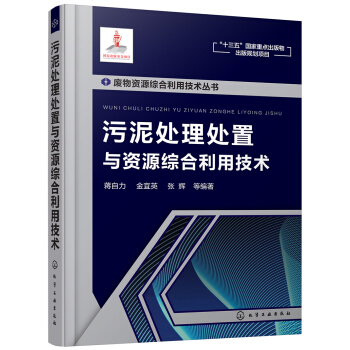
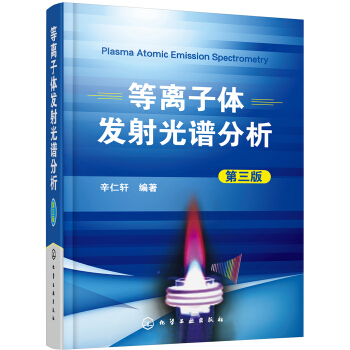
![水文地质学 [Hydrogeology] pdf epub mobi 电子书 下载](https://pic.tinynews.org/12313754/5ab22d5eN473d0fe1.jpg)




![数理地图学:地图学及其数学原理(第二版) [Mathematical Cartography:Cartography and Its Mathematical Elements] pdf epub mobi 电子书 下载](https://pic.tinynews.org/12314564/5aa797fcN7e4d1669.jpg)

![电动力学导论(翻译版 原书第3版)/时代教育国外高校优秀教材精选 [Introduction to electrodynamies third edition] pdf epub mobi 电子书 下载](https://pic.tinynews.org/12314914/5aa5e2c2N4c3bfedc.jpg)

